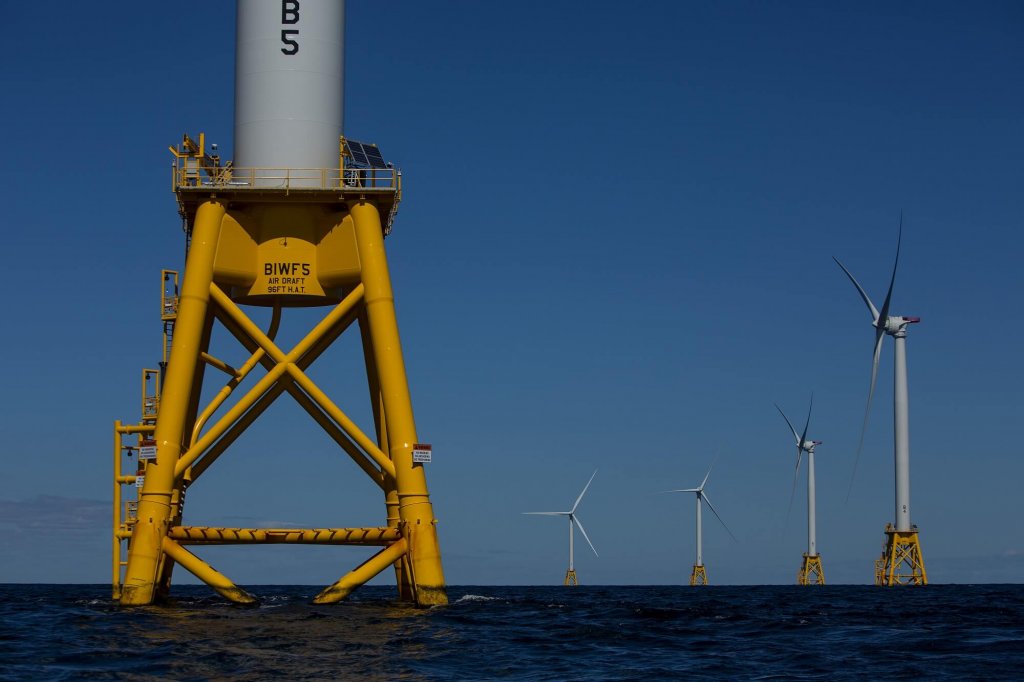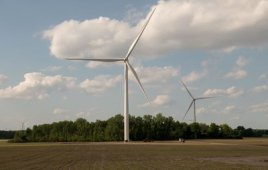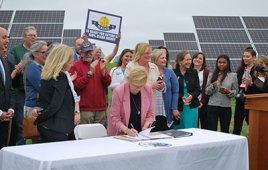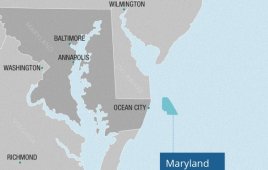These findings reported here are part of an economic study released by Bloomberg New Energy Finance (BNEF) and commissioned by Eaton in partnership with the Renewable Energy Association (REA).
Economic tipping points mean renewable energy will account for over half of electricity generation by the mid-2020s in the UK and Germany. This comes as the cost of generating energy from wind and solar is expected, by 2040, to drop by more than half of today’s levels.
This rapid growth in variable renewables will lead to much greater volatility in the power system, challenging inflexible ‘baseload’ generators and creating opportunities for new flexible sources. Due to the variable nature of wind and solar, there will be some days and even whole weeks where the total generation from renewable sources is more than enough to meet power demand in the UK and Germany. In certain weeks and months, however, low wind speeds coinciding with cloudy skies will require other generation sources to meet the majority of demand. The research shows that while there will be a significant increase in the amount of variable renewables on the system, the total backup needed by 2040 in the UK and Germany will be much the same as in 2017.
These findings are part of an economic study released today by Bloomberg New Energy Finance (BNEF) and commissioned by Eaton in partnership with the Renewable Energy Association (REA).
The study – ‘Beyond the tipping point: flexibility gaps in future high-renewable energy systems in the UK, Germany and the Nordics’ – highlights that future energy systems in the UK and Germany with very high levels of variable renewable generation must be complemented by flexible resources, including energy storage.
Key findings of the study include:

• At certain times, and with increasing frequency, wind and solar energy alone could meet – and even exceed – total power demand in both markets.
- At certain times, and with increasing frequency, wind and solar energy alone could meet – and even exceed – total power demand in both markets;
- With more renewable supply comes more curtailment, but not to significant levels: in 2030, less than 1% of UK and 3% of German wind and solar generation is curtailed or ‘wasted’ due to oversupply. By 2040, this rises to 3% and 16% respectively;
- Increased wind and solar generation results in more variable demand for other energy sources to plug power supply gaps. In this environment, flexible power technologies such as energy storage and gas generators will have an advantage. In addition, certain types of demand response such as flexible electric vehicle charging and variable industrial loads can respond quickly to conditions on the grid, or shift or consume surplus renewable energy;
- As early as 2030, there will be whole weeks where wind and solar power generation exceed total demand at some point every day. This creates a very challenging environment for ‘baseload’ technologies that benefit from running at a constant stable output, such as nuclear, coal and lignite;
- However, even in the 2040 scenarios, there will be some weeks and months where generation other than wind and solar must be called upon to meet the majority of demand. Such long ‘gaps’ cannot be filled with demand response and current energy storage technologies. A fleet of flexible resources will need to be maintained to meet these gaps, including gas generation, interconnectors and dispatchable renewable technologies such as bioenergy. In future, long-term storage solutions such as hydrogen may come into play too.

As wind and solar become the cheapest options for power generation, the race is on to develop and deploy the flexible resources that will complement them, Photographer: Eric Thayer/Bloomberg
“This study highlights a seismic shift in how power systems will operate in future. As wind and solar become the cheapest options for power generation, the race is on to develop and deploy the flexible resources that will complement them,” said Albert Cheung, head of global analysis at Bloomberg New Energy Finance.
“Eaton commissioned this economic study to understand the size of the challenge before exploring possible policy and technology responses, which will be the focus of the second part of the study to be released in early 2018,” said Louis Shaffer, distributed energy segment manager, Europe, Middle East and Africa Region at Eaton.
“These solutions could include continued promotion of smart metering, reforms to increase market openness and transparency for all grid ancillary services and long-term grid service contracts and pricing schemes. We will also analyze the benefits of various policy options for the future of the energy market that includes battery storage,” added Shaffer.
“The study shows that wind and solar power are now the cheapest forms of new build generation in many cases, and costs will continue to fall dramatically. Massive increases in future renewable power generation mean that industry and government must start planning now to ensure low-carbon, cost-effective ways of balancing demand and supply,” said Dr. Nina Skorupska, chief executive of the Renewable Energy Association.
“We believe that there is a role for fuelled renewable technologies such as bioenergy and energy from waste to provide the complementary baseload generation that will be required, to avoid the need for carbon-intensive generation at all. This study shows that battery storage is well placed to serve short-term supply and demand issues and highlights the dramatic cost reductions in renewable power over the past few years,” added Skorupska.
An executive summary of the study is available for download at www.eaton.com/tippingpoints.
Filed Under: Uncategorized




